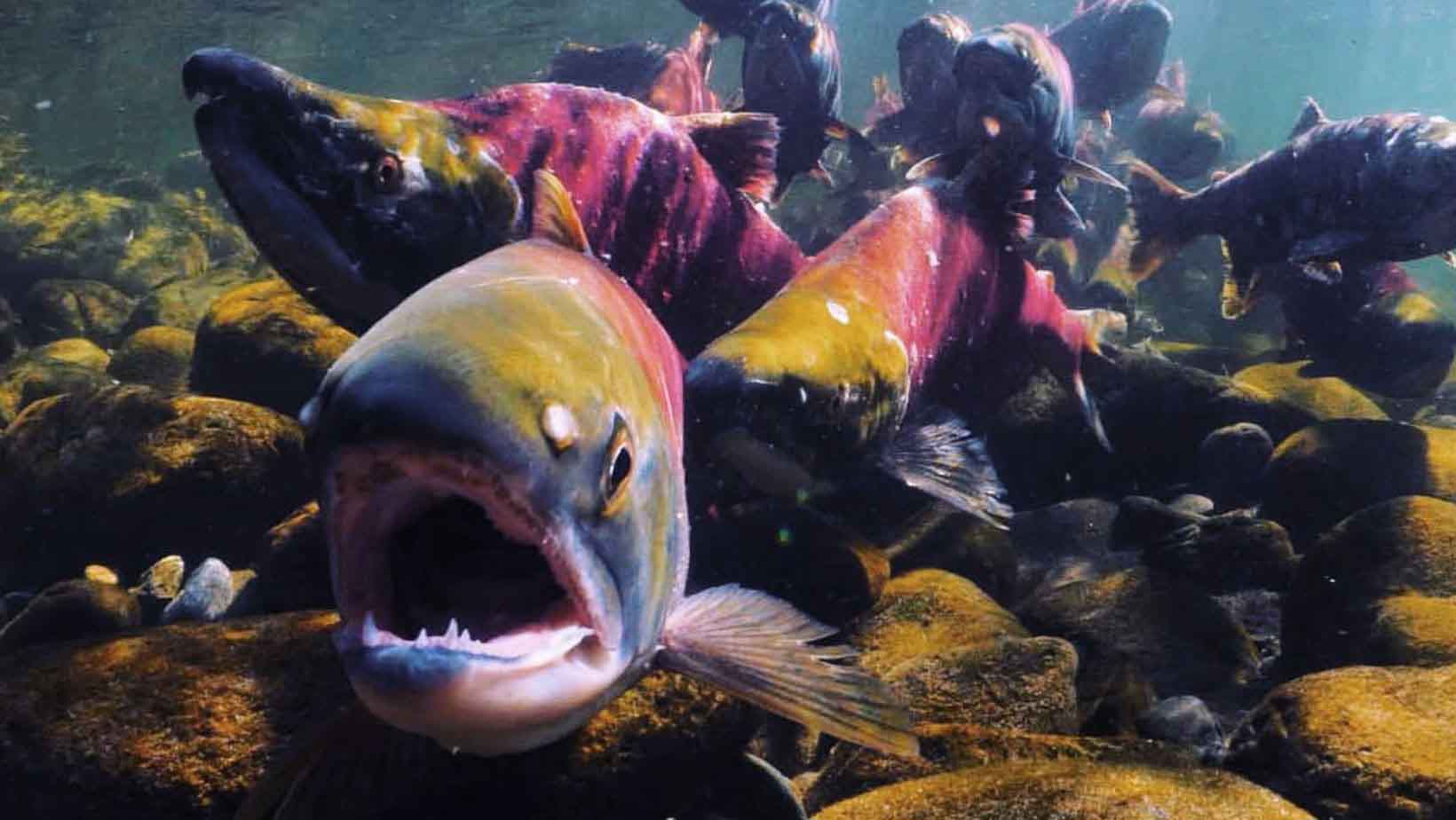Salmon populations in the province are dwindling thanks to a number of different factors
It was on a trip to Kamloops in the fall of 2022 that Dane Chauvel could see, starkly, just how much B.C. salmon are under threat. The second-generation fisherman, founder of Organic Ocean Seafood and chair of the BC Salmon Marketing Council, had been invited to Kamloops to tour a major habitat restoration project that was being undertaken by the Stk’emlupsemc te Secwepemc Nation. The problem was, because of a worsening drought, there were no fish.
“Because the fish aren’t making it from the marine to the freshwater environment, you see these beautiful spawning beds and migratory pathways, but they have no fish in them. It was dramatic,” says Chauvel. “Most of us don’t have any sense of how bad it is until you actually go there and start walking the streams and you see no salmon. In many cases, the water was down to a trickle.”
After several years of climate shifts including record-breaking temperatures, low snowpack, drought, atmospheric rivers, forest fires and other extreme weather events, it’s no longer an uncommon sight in B.C.
Climate change has led to rising water temperatures, reduced river levels, lower dissolved oxygen levels, a smaller food supply and other factors that are threatening salmon populations across the province—and, by extension, the fishing industry. As a result, says Chauvel, fishers are leaving the business en masse.
“There are two issues. One is the locked-in lack of predictability. You can’t business plan if you don’t have any idea what to expect,” argues Chauvel. “The second is that you have interruptions in production. You’ll have seasons where you have no fish—and if you have no fish you have no income. How do you keep people employed? That’s a major problem.”
Unpredictable returns are also a major problem for many Indigenous communities that rely on salmon not only for their businesses but also for food, culture and the environment. Tara Marsden, an independent contractor with the Gitanyow Hereditary Chiefs, says they are seeing drought and wildfire in areas where they haven’t seen those events before.
Two streams in northwestern B.C.’s Meziadin River system used to produce 80 percent of the Nass River sockeye, she says, but with less snowpack, some stretches have run completely dry. Shifting rain patterns have also meant that salmon get stuck waiting for cooler waters before heading upstream.
“One stream went from 20,000 spawners returning annually to as low as 100,” says Marsden. “And our fishery feeds not only Gitanyow people, but First Nations people from all over—especially the Fraser system where their fish have just tanked. They have no salmon left.” Businesses from tourism to commercial food production have also been hit hard.
According to Simon Fraser University professor Jonathan Moore, in many areas, warmer waters, lower river levels and damaged habitat are threatening young salmon that rear in fresh water, while adult salmon are having trouble making it to their destinations.
“Salmon are a cool-water species. So if the waters get too hot, they can get stressed. And if it gets really hot, they can have heart attacks and die. That’s happening,” says Moore. “In some rivers in some years, we’re seeing 50 or 70 percent of adult salmon dying on their way upstream.” What’s more, flooding caused by atmospheric rivers can flush out buried salmon eggs, killing thousands of fish at the start of their lifecycle.
There is a small silver lining, however: Moore says that in northern areas, climate change is heating up colder waters to the point where they’re essentially a “Goldilocks temperature” for salmon, and glacier retreat will open up new habitats—although in those areas, mining companies are vying for previously inaccessible deposits, which can further interrupt salmon populations.
In order for fisheries to survive, he says, there should be limits on water use in other sectors, such as agriculture, as well as stronger protections from the downstream effects of forestry, mining and other development. At the same time, commercial fisheries need to adapt to shifting returns.
“We need to be able to shut fisheries on and off. So if there is an unpredictably low return, those fisheries need to be closed down,” says Moore, who applauds Fisheries and Oceans Canada for taking bold steps when waters are too warm. “And if there’s a surprisingly good return, there will be opportunities.”
Chauvel agrees—and would like to see more habitat protection and further limits on the agricultural use of water; he would also like to see dams, open-pen salmon farms and other barriers to wild salmon migration removed. (Shortly after BCBusiness interviewed Chauvel, the federal government announced it was delaying a ban on open-net salmon farming off B.C.’s coast until 2029 to allow the aquaculture industry time to transition to land-based operations.)
Because the effects of climate change have become so apparent, he doesn’t know a single climate denier in the business. But despite the environmental pressures, Chauvel is optimistic enough that he’s hanging on to his fishing boat—“I wouldn’t keep it if I didn’t believe in the industry,” he says—and emphasizes that because salmon have a relatively short lifecycle, they can bounce back quickly given the right conditions.
“There is enough interest in getting things right that the outlook for wild salmon in British Columbia is more positive today than it has been in a very long time. So I’m hanging in,” he says. “Those of us who have an interest in this are investing in bringing it back—and we obviously have some level of confidence that we’re going to be successful.”
